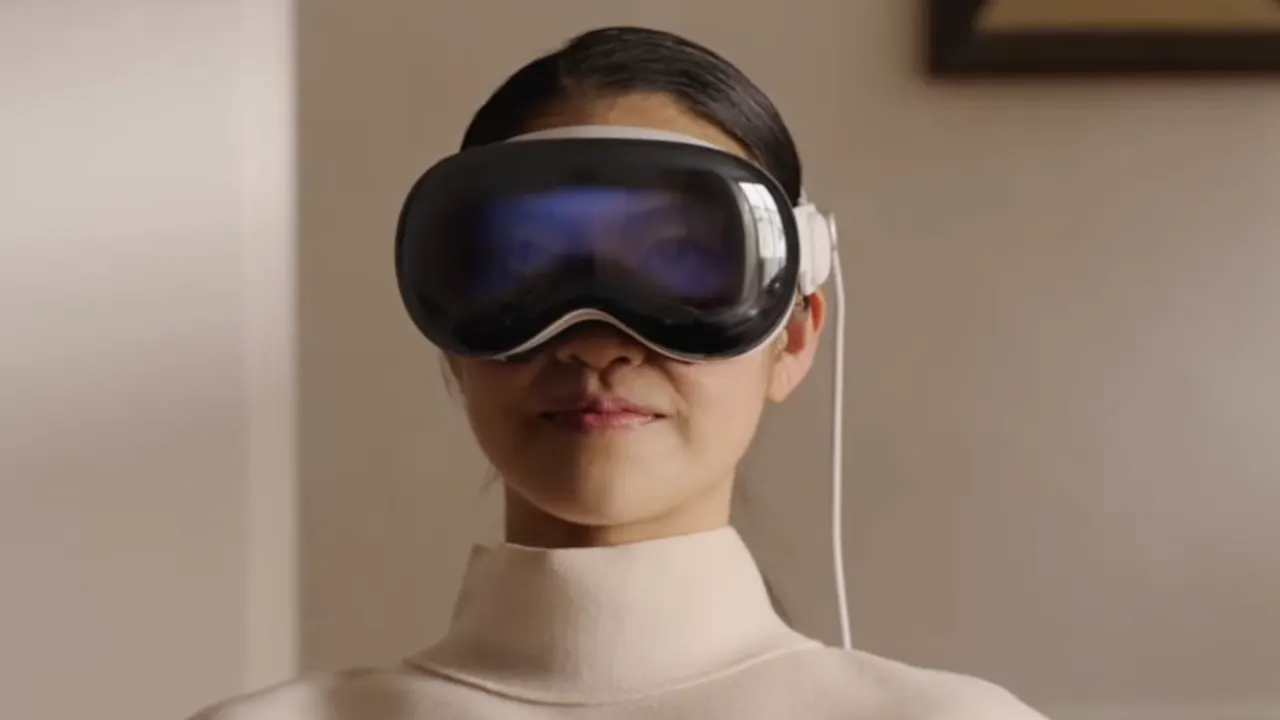Following years of speculation, Apple officially revealed the Vision Pro, its augmented reality (AR) headset that enables real-world-meets-virtual experiences for entertainment, productivity, and more.
The Vision Pro is a standalone headset that looks like slim ski goggles, maintaining the sleek aesthetic of other Apple products. It features a mix of metal and fabric, plus the familiar "Digital Crown" dial from the Apple Watch. It also has an external display that shows the eyes of the wearer via internal cameras.
The headset will be priced at $3,499 and release in early 2024.
"It's the first Apple product you look through and not at," said Apple CEO Tim Cook at the annual WWDC conference keynote, where the headset was officially revealed for the first time.
The augmented reality headset lets wearers look "through" the headset via an array of external cameras, with digital content overlaid on your real world surroundings. That means you'll be able to see things like interface windows and video screens floating in the world around you, as well as 3D graphics and elements set atop your real-world tables and counters, for example.

The Apple Vision Pro utilizes the same M2 chip as Apple's Mac computer line, and then augments it with a new R1 chip that's used to handle all of the data coming from built-in cameras and sensors. The headset uses Apple's new visionOS operating system, which is built specifically for the spatial computing device and relies on hand and gesture-based navigation.
Apple's headset has an external battery pack that connects via a cord as to not weigh down the visor. The battery will last for about two hours, but the headset can also be used indefinitely when plugged into a wall outlet.
The Vision Pro is packed with external cameras and sensors, which enable hand and gesture-based navigation with no physical controller required. And a modular design was developed to emphasize comfort and fit, with multiple strap options available.
Full technical specifications have yet to be revealed, but Apple says that the twin displays (one for each eye) will collectively feature 23 million pixels—an approach that provides a better-than-4K image to each eye, apparently enabling crisp, clear graphics. Meanwhile, a low-latency design is meant to avoid the kinds of motion sickness that competing AR and virtual reality (VR) headsets sometimes trigger in wearers.

Notable features include a built-in 3D camera that can take photos and videos with depth, and then you'll be able to view the media with spatial audio through the headset. The headset can also create a "Persona," a digital recreation of the wearer that is developed via the cameras and machine learning techniques. When holding video calls via FaceTime, the other person will see the wearer's Persona react in real-time based on what the user does.
The Apple Vision Pro is not being billed as a virtual reality headset, but you can become fully immersed in an experience and block out the view of your real world. For example, you can fire up a movie on a giant screen and turn the backdrop into a fantastical scene or even a blank virtual movie theater.
However, Apple did not show typical, immersive VR games and experiences, suggesting a particular focus on augmented reality experiences. The only games that Apple showed during today's presentation are existing Apple Arcade games built for iOS devices, which can be played on a digital screen via the Apple Vision Pro using an Xbox or PlayStation controller.
Further details about the Apple Vision Pro will be released over the course of the week at WWDC, the company said, and also in the months ahead of the early 2024 release.

